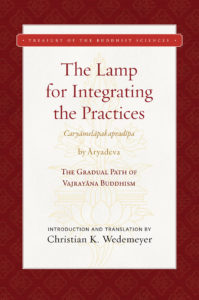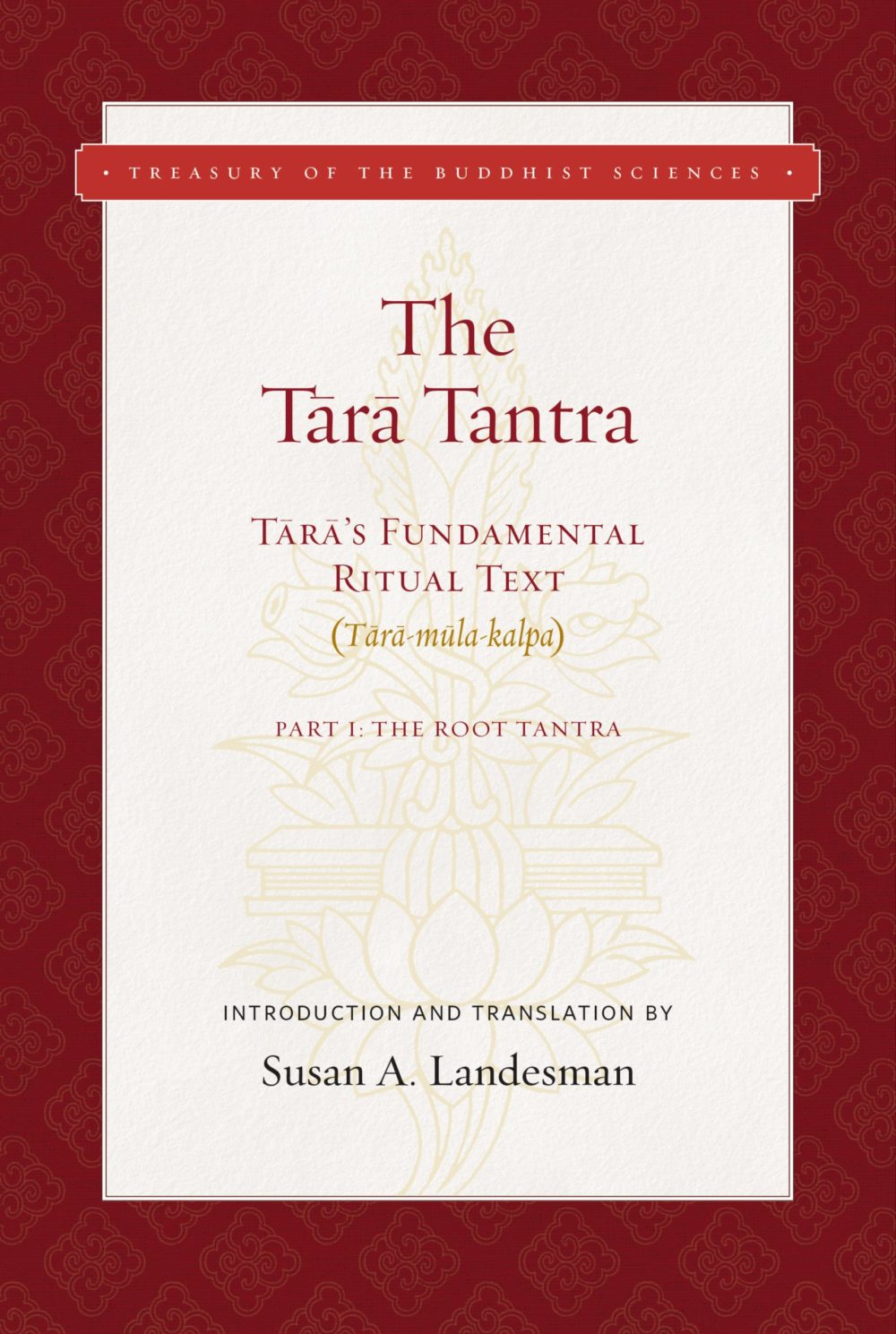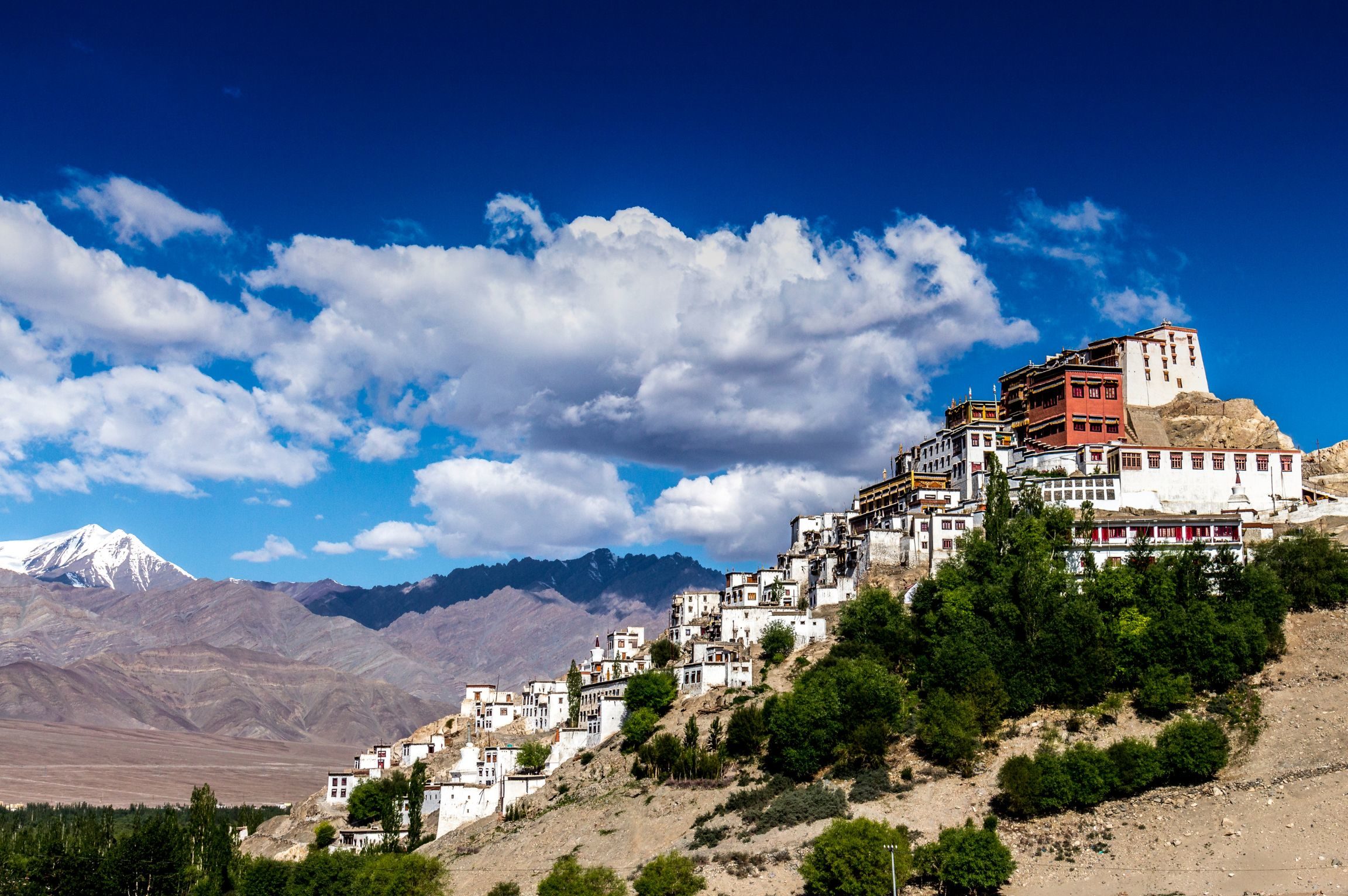
The American Institute of Buddhist Studies
The Translated Scriptures & Treatises
The Treasury of Buddhist Sciences
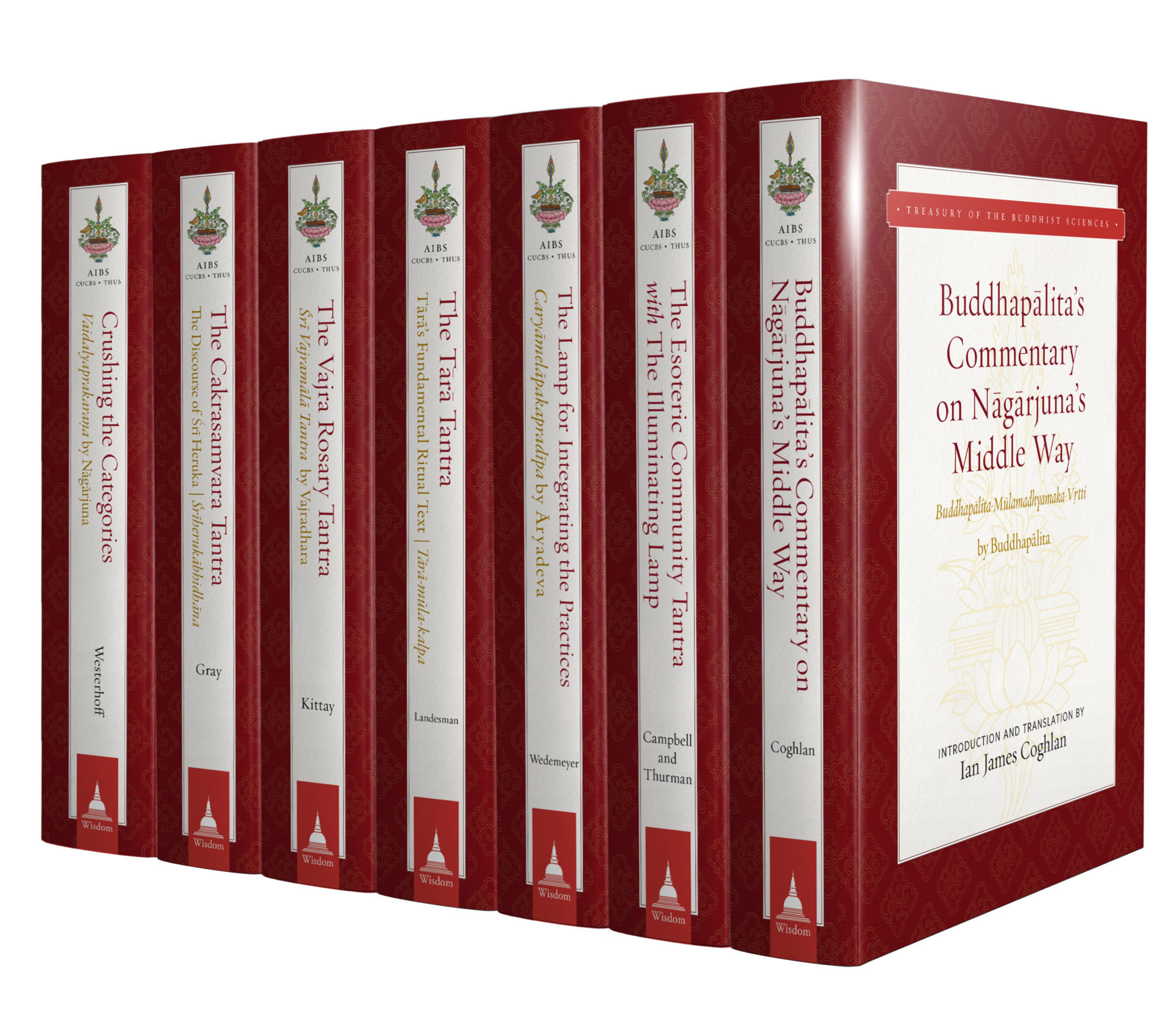 The founding series from American Institute of Buddhist Studies (AIBS), fulfilling its mission to translate the Tengyur, the Tibetan canon of scientific treatises (śāstra), which constitutes Indo-Tibetan civilization’s contribution to the contemporary arts and sciences.
The founding series from American Institute of Buddhist Studies (AIBS), fulfilling its mission to translate the Tengyur, the Tibetan canon of scientific treatises (śāstra), which constitutes Indo-Tibetan civilization’s contribution to the contemporary arts and sciences.
Explore the Series
LATEST RELEASE
THE KĀLACHAKRA MANDALA: THE JONANG TRADITION
By Edward Henning
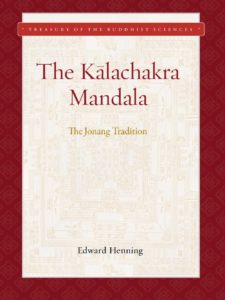 A detailed, beautifully illustrated presentation of the construction and symbolism of the famed Kālachakra mandala, the crown jewel of the Indo-Tibetan tantric traditions. This volume contains an extensive analysis of the construction and symbolism of the mandala of the Kālachakra tantric system, the most intricate and explicit of the Indian Buddhist unexcelled yoga tantras, the most advanced teachings within the Indo-Tibetan tradition. Indo-Tibetan tantric traditions, particularly the unexcelled category, depend on imagery and visualization for the processes of purifying cyclic existence, and Kālachakra is the most detailed. The late scholar-practitioner Edward Henning, one of the earliest Western specialists on this material, offers this labor of love as a testament to the genius of the Tibetan tradition in preserving and transmitting these teachings over a thousand years.
A detailed, beautifully illustrated presentation of the construction and symbolism of the famed Kālachakra mandala, the crown jewel of the Indo-Tibetan tantric traditions. This volume contains an extensive analysis of the construction and symbolism of the mandala of the Kālachakra tantric system, the most intricate and explicit of the Indian Buddhist unexcelled yoga tantras, the most advanced teachings within the Indo-Tibetan tradition. Indo-Tibetan tantric traditions, particularly the unexcelled category, depend on imagery and visualization for the processes of purifying cyclic existence, and Kālachakra is the most detailed. The late scholar-practitioner Edward Henning, one of the earliest Western specialists on this material, offers this labor of love as a testament to the genius of the Tibetan tradition in preserving and transmitting these teachings over a thousand years.
BUDDHAPĀLITA’S COMMENTARY ON NĀGĀJUNA’S MIDDLE WAY
By Buddhapālita
Introduced and Translated by Ian James Coghlan
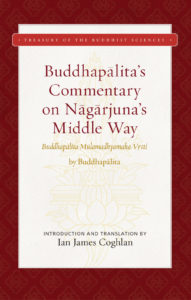 This “Buddhapālita” commentary on Nāgārjuna’s famous first-century text Wisdom: Fundamental Middle Way Verses has been considered for over a thousand years by Indian and Tibetan philosophers to be the special key that best unlocks the deep philosophical freedom from confusion and perplexity that the Middle Way (or Centrist) school seeks to provide for its students.
This “Buddhapālita” commentary on Nāgārjuna’s famous first-century text Wisdom: Fundamental Middle Way Verses has been considered for over a thousand years by Indian and Tibetan philosophers to be the special key that best unlocks the deep philosophical freedom from confusion and perplexity that the Middle Way (or Centrist) school seeks to provide for its students.
Chandrakīrti (seventh century) defended Buddhapālita’s elegant approach as most effective in opening the Middle Way for the inquiring mind to find the liberating experience of reality. Atisha (eleventh century) brought Buddhapālita’s and Chandrakīrti’s transformative critical method to spread widely in Tibet, and Tsongkhapa (fifteenth century) provided a clarification of this philosophical work that was so rigorous and crystal clear that it opened the minds of Tibetan philosopher scientists of all schools until today.
Ian Coghlan’s masterful translation makes Buddhapālita’s breakthrough elucidation of the Wisdom Verses clearly accessible. The translator’s unique education combines the Indo-Tibetan geshé curriculum with the modern doctoral training that adds comparative text-critical analysis and comparative language research in Sanskrit as well as Tibetan. This intellectual and experiential education enabled him to produce this reliable translation for the philosophical seeker to fully engage with Buddhapālita’s richly transformative, liberating work.
OTHER VOLUMES IN THE SERIES
THE ESOTERIC COMMUNITY TANTRA WITH THE ILLUMINATING LAMP
Volume I: Chapters 1–12
By Vajradhara and Chandrakīrti
Introduced and Translated by John R.B. Campbell and Robert Thurman
This volume is a translation of the first twelve chapters of The Glorious Esoteric Community Great King of Tantras (Śrī Guhyasamāja Mahā-tantra-rāja), along with the commentary called The Illuminating Lamp (Pradīpoddyotana-nāma-ṭīkā), a commentary in Sanskrit on this tantra by the seventh-century Buddhist intellectual and tantric scholar-adept Chandrakīrti. Regarded by Indo-Tibetan tradition as the esoteric scripture wherein the Buddha revealed in greatest detail the actual psycho-physical process of his enlightenment, The Esoteric Community Tantra is a preeminent text of the class of scriptures known to Indian Buddhist scholar-adepts as great yoga tantra, and later to their Tibetan successors as unexcelled yoga tantra. The Illuminating Lamp presents a system of interpretive guidelines according to which the cryptic meanings of all tantras might be extracted in order to engage the ritual and yogic practices taught therein. Applying its interpretive strategies to the text of The Esoteric Community Tantra, The Illuminating Lamp articulates a synthetic, “vajra vehicle” (vajrayāna) discourse that locates tantric practices and ideals squarely within the cosmological and institutional frameworks of exoteric Mahāyāna Buddhism.
THE LAMP FOR INTEGRATING THE PRACTICES
The Gradual Path of Vajrayāna Buddhism
By Āryadeva
Introduced and Translated by Christian K. Wedemeyer
The Lamp for Integrating the Practices (Caryāmelāpakapradīpa) by Āryadeva, is a systematic and comprehensive exposition of the most advanced yogas of the Esoteric Community Tantra (Guhyasamāja-tantra) as espoused by the Noble (Nāgārjuna) tradition, an influential school of interpretation within Indian Buddhist mysticism. Equal in authority to Nāgārjuna’s famous Five Stages (Pañcakrama), Āryadeva’s work is perhaps the earliest prose example of the “stages of the mantra path” genre in Sanskrit. Its systematic path exerted immense influence on later Indian and Tibetan traditions, and it is widely cited by masters from all four major lineages of Tibetan Buddhism.
This volume presents the Lamp in a thoroughly annotated English translation. It includes an introductory study discussing the history of the Guhyasamāja and its exegetical traditions, surveying the scriptural and commentarial sources of the Nāgārjuna tradition, and analyzing in detail the contents of the Lamp. The book also features a detailed, trilingual glossary.
THE TĀRĀ TANTRA
Tārā’s Fundamental Ritual Text, Part 1: The Root Tantra
This volume contains an English translation of the “root text” of the Tārā-mūla-kalpa, a scripture-ritual compendium that captures an important Buddhist tantric tradition in mid-formation. In this regard it is utterly unique and unlike any other text in the Buddhist canon. Its contents document the emergence of the quintessential female Buddha Tārā in seventh-century India. As her popularity grew, her cult spread throughout Southeast Asia, as well as Tibet, where she became revered as the “Mother” of the Tibetan people. Tārā is worshiped for a variety of reasons, from health and long life, to wealth, protection from enemies, and ultimately, the mind of enlightenment. Her presence pervades the evolution of Buddhism in Tibet, including within royal circles, as well as mentor and guide to many important Buddhist scholars, practitioners, and lineage holders.
THE VAJRA ROSARY TANTRA
An Explanatory Tantra of the Esoteric Community Tantra with Commentary
By Vajradhara with Commentary by Alaṁkakalasha
Introduced and Translated by David Kittay with Lozang Jamspal
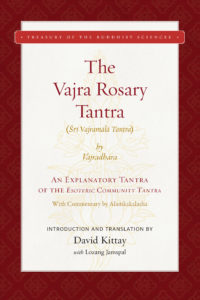 The Vajra Rosary Tantra (Śrī Vajramālā Vyākhyā Tantra) is one of the most significant and detailed tantras attributed to the Buddha, in his emanation as Vajradhara. It instructs a practitioner how to overcome the 108 energies and their related instinctual conceptions that circulate in the subtle body and mind and drive continued rebirth in cyclic existence, in order to attain the freedom of enlightenment. One of the explanatory tantras of the Buddhist Esoteric Community (Guhyasamāja) Tantra, its unexcelled yoga tantric system is among the most advanced systems described in Tibetan Buddhist literature. It mainly focuses on the final stage of Buddhist tantric practice, the perfection stage by means of which a person is said actually to become a buddha.
The Vajra Rosary Tantra (Śrī Vajramālā Vyākhyā Tantra) is one of the most significant and detailed tantras attributed to the Buddha, in his emanation as Vajradhara. It instructs a practitioner how to overcome the 108 energies and their related instinctual conceptions that circulate in the subtle body and mind and drive continued rebirth in cyclic existence, in order to attain the freedom of enlightenment. One of the explanatory tantras of the Buddhist Esoteric Community (Guhyasamāja) Tantra, its unexcelled yoga tantric system is among the most advanced systems described in Tibetan Buddhist literature. It mainly focuses on the final stage of Buddhist tantric practice, the perfection stage by means of which a person is said actually to become a buddha.
There is no more authoritative endorsement than that of the great Tibetan renaissance scholar, Lama Tsong Khapa, who strongly recommended the Vajra Rosary Tantra as follows: “Nāgārjuna, in condensing the perfection stage into the five stages, follows this tantra; he also follows it regarding the creation stage three samadhis, four yogas, thirty-two deities, and so forth. . . . It explains the many stages of creation and dissolution of the body in terms of the channel structure, wind energy movement, and enlightenment-spirit substance as a factor in the decisive ascertainment of the internal and external life-energy controls for bringing forth the four voids and the magic body, depending on . . . the hidden discipline of desire and of the vajra recitation . . . and the limitless ways for the dawning of realization. . . . It seems that such excellent elucidation is rarely seen.”
THE CAKRASAMVARA TANTRA
The Discourse of Sri Heruka
By Śrīherukābhihāna
A Study and Annotated Translation by David B. Gray
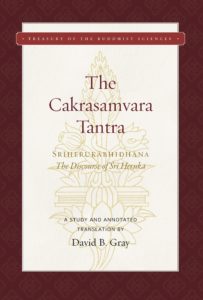 Composed in India during the late eighth or early ninth century, this text is a foundational scripture of one of the most important Indian Buddhist tantric traditions, as evidenced by the vast number of commentaries and ritual literature associated with it. Along with the Hevajra Tantra, it is one of the earliest and most influential of the Yogini Tantras, a genre of tantric Buddhist scripture that emphasizes female deities, particularly the often fiercely depicted yoginis and dakinis.
Composed in India during the late eighth or early ninth century, this text is a foundational scripture of one of the most important Indian Buddhist tantric traditions, as evidenced by the vast number of commentaries and ritual literature associated with it. Along with the Hevajra Tantra, it is one of the earliest and most influential of the Yogini Tantras, a genre of tantric Buddhist scripture that emphasizes female deities, particularly the often fiercely depicted yoginis and dakinis.
The author’s introductory essay provides an analysis of the historical and intellectual contexts in which the tantra was composed, including its complex interrelationship with Hindu Saiva traditions, and investigates the history of its adaptation by Buddhists. The translation was made on the basis of the surviving Sanskrit manuscripts of the tantra and its commentaries, as well as parallel passages in related explanatory tantras (vyakhyatantra). It is also takes into consideration two different Tibetan translations of the root text, and several Tibetan commentaries. The translation itself is heavily annotated, with extensive translations from the Indian and Tibetan commentaries on the text. Includes a trilingual glossary and index.
The author has now also translated the commentary on this tantra by the great Tibetan scholar Tsong Khapa (1357–1419), which appears in two volumes as Illumination of the Hidden Meaning. Taken together, these three volumes provide the reader with the first full study in English of this pivotal tantra.
CRUSHING THE CATEGORIES
Vaidalyaprakaraṇa
By Nāgārjuna
Introduced, Translated, and Commentary by Jan Westerhoff
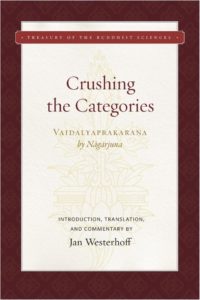 The Vaidalyaprakaraṇa provides a rare glimpse of the sophisticated philosophical exchange between Buddhist and non-Buddhist schools at an early stage and will be of interest to scholars of Buddhist thought, classical Indian Philosophy, and the history of Asian thought.
The Vaidalyaprakaraṇa provides a rare glimpse of the sophisticated philosophical exchange between Buddhist and non-Buddhist schools at an early stage and will be of interest to scholars of Buddhist thought, classical Indian Philosophy, and the history of Asian thought.
Belonging to a set of Nāgārjuna’s philosophical works known as the yukti-corpus, the Vaidalyaprakaraṇa is noteworthy for its close engagement with the Hindu philosophers. It refutes the sixteen categories of the Nyāya school, which formed the logical and epistemological framework for many of the debates between Buddhist and Hindu philosophers.
The Sanskrit original of the Vaidalyaprakaraṇa long lost, the author translates the text from Tibetan, giving it an extensive analytical commentary. The aim is twofold: to investigate the interaction of the founder of the Madhyamika school with this influential school of Hindu thought; and to make sense of how Nāgārjuna’s arguments that refute the Naiyāyika categories are essential to the Madhyamika path in general.
Meet the Editors
 Editor-in-Chief
Editor-in-Chief
Robert A.F. Thurman, Jey Tsong Khapa Professor of Indo-Tibetan Buddhist Studies, Columbia University; President, American Institute of Buddhist Studies
 Executive Director
Executive Director
Thomas F. Yarnall, Department of Religion, Columbia University
 Associate Editor
Associate Editor
Paul G. Hackett, Department of Religion, Columbia University


